Site menu:
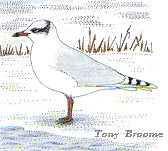
July 2012 Newsletter
The Mediterranean Gull.
June Bird News.
Forthcoming Events.
Latest Newsletter.
The Mediterranean Gull
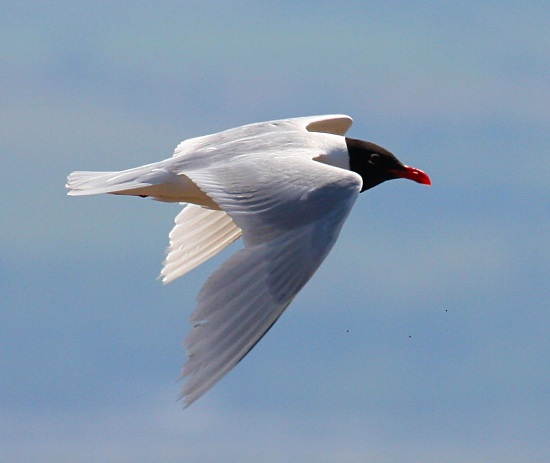
I don't normally look through flocks of thousands of gulls looking for
rarities, I leave that to the Laruphiles*, but I make an exception when
searching for Mediterranean Gulls which look stunning, particularly
when in breeding plumage as you can see from the photos in this
article. Not that Mediterranean Gulls can be classed as rarities
any more having undergone a large range expansion over the past 50
years westwards from their stronghold in the Black
Sea.
The graph below shows how
numbers have increased here on the Dee Estuary since 1975 when only one
was observed; the first ever record for Cheshire and Wirral was one at
Seacombe Ferry in July 1967. As you can see records can vary a lot from
year to year, and this partly depends how long birds stay in the area
after returning from breeding in July.
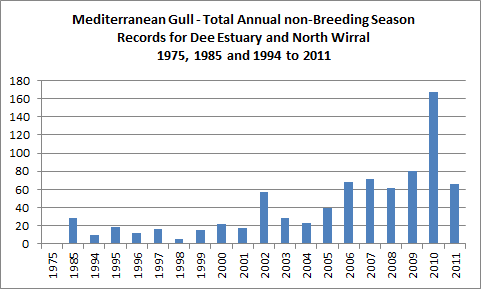
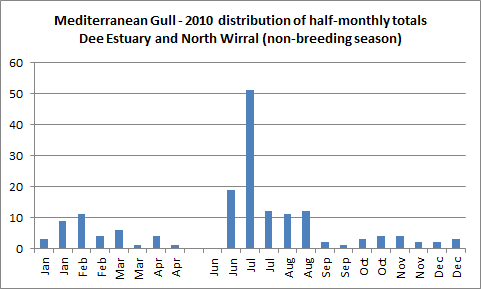
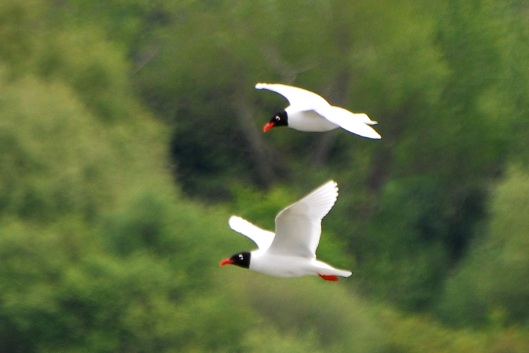
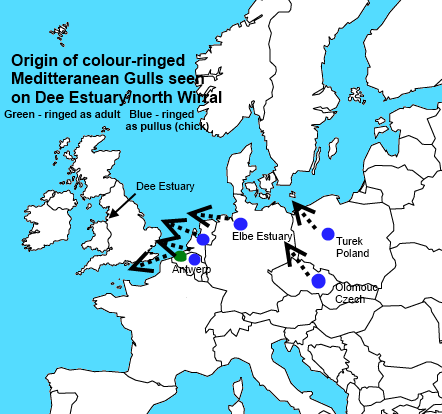
Here on the Dee Estuary/North Wirral recording of six colour-ringed birds over the past few years show birds have flown from Belgium, the Netherlands, Germany, the Czech Republic and Poland, five of these birds were ringed as chicks in the nest and the sixth bird was a breeding adult (see above map).
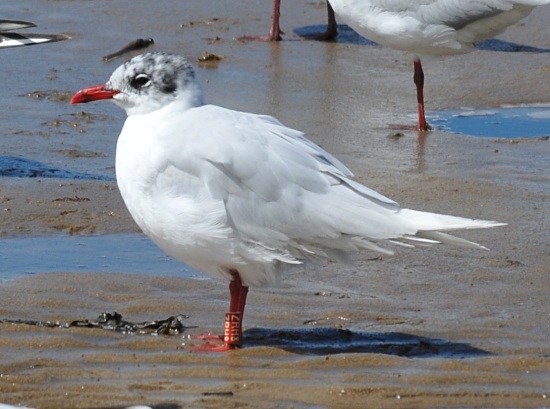
Colour ringing these birds enable us to track them over several years and they show some fascinating movements. ZRH8, above, was one of three ringed birds seen in July 2010 along north Wirral. It was ringed as a chick in the Czech Republic in May 2004 before finding its way to Brittany by the following April. It then spent the autumn and early winter of 2005 around New Brighton but wasn't recorded again until July 2007 when it was in the Netherlands. It was seen at New Brighton again in July 2009 and then Hoylake the following year, in 2010 when the above photo was taken. Another was breeding in the Elbe Estuary, Germany, on May 22nd 2010 before finding its way to Seaforth by July 4th 2010 and then Hoylake a week later, a fair distance in a matter of a few weeks. One has returned to the Leasowe Lighthouse area four years out of the last six and is often seen feeding on chips with the Black-headed Gulls in the car park!
July is the best time to see these birds and early in the month they will still be in breeding plumage. Any large flock of Black-headed Gulls is likely to contain at least one or two with Hoylake and West Kirby shores usually giving the closest views. As well as the relatively easy to spot adults keep an eye open for immature birds which present more of an ID challenge, one of the birds seen in 2010 was a juvenile ringed as a chick in Poland on Jun 1st and was recorded on West Kirby Marine Lake just 11 weeks later.
If you see any colour rings it is important to note the colour of the ring and the leg it was on, as well as the letters and numbers. I would be grateful if you could let me have any colour-ring sightings and I can report them if you wish, otherwise use the web pages shown below in Reference 1.
* From the scienific name for gulls - Larus.
Sources of Information:
1. The Colour-ringed Mediterranean Gull project including those mention in the following web page: http://medgull.free.fr/pages/coordinators.php (for the codes see
http://medgull.free.fr/pages/codes.php).
2. Colour-ringed Mediterranean Gulls in Scotland (J. Bos - Birding Scotland 8:2 - 2005).
4. JNCC - Status and trends of Mediterranean Gull Larus melanocephalus,
http://jncc.defra.gov.uk.
5. The Migration Atlas, BTO, 2002.
6. Birds of the Western Palearctic (BWPi - interactive edition).
7. Holling et al., Rare breeding birds in the UK in 2009, British Birds 104, Sep 2011,
8. Cheshire and Wirral Bird Reports 1967 to 2010.
9. CAWOS Database (Mediterranean Gull 2001 to 2010).
11. Frank Duff, Breeding Mediterranean Gulls on Blakemere Lake, 2004 Cheshire and Wirral Bird Report.
12. Dee Estuary Birding latest sightings archive - www.deeestuary.co.uk.
Richard Smith.
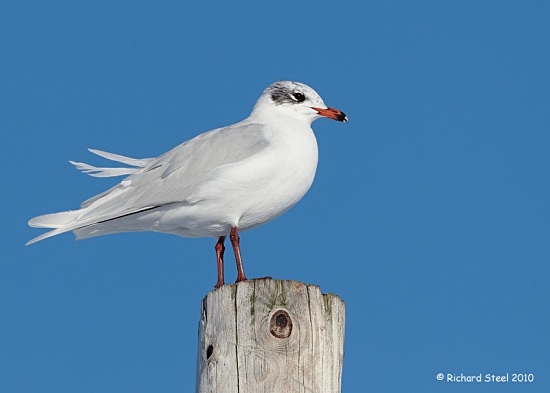
see - wildlifephotographic.blogspot.co.uk
Top of Page
June Bird News
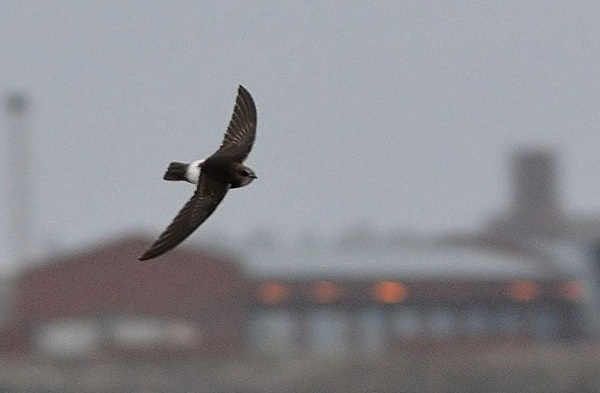
A male Golden Oriole caused a bit more controversy, first seen briefly at Burton Point on the 14th, it or another was heard singing on the 24th but unfortunately the location of this second report remains a mysterious secret, apparently. Given the large influx of Golden Orioles into the country during May and into June (100+ reported on Bird Guides) it is not surprising another has turned up in our area after the one at Leasowe in May. Another good rarity was a Blue-headed Wagtail on Hilbre on the 14th and there were four more sightings of a single Red Kite over the west side of Wirral.
Out on Parkgate Marsh the Great White Egret stayed until the 17th, and a Spoonbill was at Burton Mere Wetlands on the 23rd. A Short-eared Owl on Burton Marsh on the 18th was presumably a very early returning bird, and there have been reports of up to four present. The first returning waders included a Spotted Redshank on the 13th and both a Green Sandpiper and Greenshank on the 16th, all at Burton Mere Wetlands. A 1,000 non-breeding Knot at Little Eye on the 12th was not unexpected but 300 Bar-tailed Godwit coming off the sea at Leasowe Lighthouse on the 18th was more unusual although several hundred do over-summer on the Ribble Estuary, as do many Knot. A Little Stint at Parkgate on the 17th was also unexpected, presumably a non-breeding bird. The Avocets at Burton Mere Wetlands have had a great breeding season with at least 40 chicks many of which have already fledged, what a contrast to the disasters of the past few years. This is thanks to the RSPB erecting an electric fence over the new bit of the reserve in front of the main hide, the Avocets just seemed to know where it was safe to nest!
NOTE: Updated July 8th with late Hilbre data.
It was a good month for sea-watching, helped by some strong winds but also some clear days of flat calm. Highlights are:
1 Storm Petrel off Hilbre (17th) and 530 Gannets past there on the 29th. Manx Shearwaters - 190 past Hoylake (16th), 46 at Gronant (20th) and 178 at Hilbre (29th). Three Pomarine Skuas at Wallasey (22nd) and five Arctic Skuas at Hilbre (23rd). One Roseate Tern (New Brighton) and two Black Terns (Wallasey), both on 23rd. 300 Sandwich Terns (12th) and 1,000 Common Terns (29th) feeding off Hilbre. 164 Common Scoter flew west past Gronant in four flocks (20th).
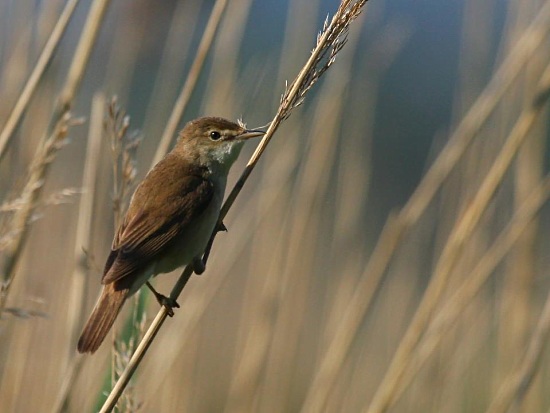
What to expect in July
Given some strong westerly winds sea-watching can be excellent with Arctic and Great Skuas, and the possibilty of a Pomarine Skua. We can also get large numbers of Manx Shearwaters and the far more difficult to spot European Storm Petrel.
For the waders winter will have already started with many back after breeding. Passage waders will include Greenshank, Wood Sandpipers, Common Sandpipers and Black-tailed Godwits.
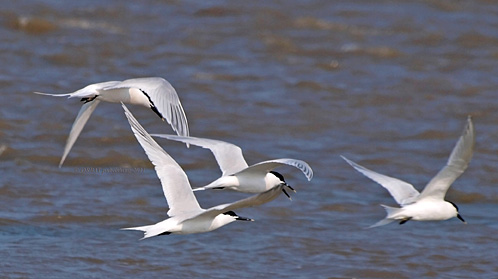
Forthcoming Events
July Highest Spring Tides (Liverpool)
Also
see Tides
page.
4th July, 12.16hrs (BST), 9.3m.
5th July, 13.04hrs (BST), 9.3m.
Forthcoming Events
Organised by the Wirral
Ranger Service , Flintshire Countryside Service and/or the
RSPB:
All these events and walks have bird interest, even those not
advertised specifically for birdwatching. No need to book for these
events unless specified - please check below.
Also see 2012 Events Diary.
Join Members of the Wirral Barn Owl Trust and Coastal Ranger
Matt
Thomas for a walk along the Wirral way to the grasslands looking over
the Dee Estuary in the search for Barn Owls who will be hunting to feed
their hungry chicks.
Organised as part of Wirral’s Year of Coast and Countryside.
Booking essential - ring:
0151 648 4371.
The Coastal Rangers and the RSPB will be serving tea and cakes on Hilbre from the old Buoymaster’s and Telegraph House gardens – a part of the island rarely seen by visitors.
The RSPB will have scopes set up overlooking Niffy Bay and will also be seal watching.
This is not a guided walk to the islands but visitors will be able to cross to the islands between the times given above. Hot drinks 50p Cakes 70p.
Organised as part of Wirral’s Year of Coast and Countryside.
Booking essential - ring: 0151 648 4371.
Saturday 4th August, 10am start, Tern-tastic at Point of Ayr.
Price: £2 for RSPB members, £5 non-members - to book ring 0151
353 8478 or 0151 336 7681.
The mouth of the River Dee is a vital feeding ground for terns and
other seabirds before they head off on their long journeys south and
The Point of Ayr, Flintshire is one of the best places to see them.
On this walk we should see near on 1000 terns (sandwich mainly but
little, common, arctic terns all occur) roosting close in as the tide
covers up their feeding areas and forces them closer to shore.
Don't forget to bring your binoculars, telescopes and cameras.
Meet at the Smuggler's Inn car park at the end of Station Road, Talacre
(Point of Ayr).
Saturday 18th August, 8pm to late, Bats at Burton Mere Wetlands RSPB.
The
Cheshire Bat Group have kindly agreed to lead a guided walk around
Burton Mere Wetlands to showcase the amazing winged mammals of the
night.
The Daubenton’s bats can be spectacular feeding over the meres so book
your place early to avoid disappointment.
Cost: £2.00 to RSPB Members and £5.00 to non-members - Please
phone 0151 353 8478 to book.